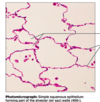Exam 1 Flashcards
(153 cards)
Definition of Anatomy
study of the structure and shape of the body
- gross anatomy –> what is visible
- microscopic anatomy –> on a cellular level
Definition of Physiology
ALL ABOUT FUNCTION. How do these structures work?
How are anatomy and physiology related?
While anatomy is the study of the structure and shape of the body, physiology is the study of how these structures work.
What are the classifications of a human?
Domain:
Kingdom:
Phylum:
Class:
Order:
Family:
Genus:
Species:
Domain: Eukarya
Kingdom: Animalia
Phylum: Chordata
Class: Mammalia
Order: Primates
Family: Hominidae
Genus: Homo
Species: Homo sapiens
KINGDOM:
What (five) characteristics make an animal an animal?
- eukaryotic
- multicellularity
- heterotrophic
- ingestion of food (we can’t just absorb it!)
- collagen
PHYLUM:
What makes a chordate a chordate?

- notochord
- dorsal hollow nerve chord
- pharyngeal pouches
- post-anal tail
CLASS:
What makes a mammal a mammal?
- mammary glands
- hair
- facial muscles
- hederodont teeth
- external ears
- 3 ear ossicles
- 7 cervical vertebrae
ORDER:
Primates characteristics
- humans, monkeys, apes, lemurs
- opposable thumbs
- stereoscopic vision: vision with depth perception, trichromatic color vision
FAMILY:
Hominidae
- 5 described species: the great apes
- humans, chimpanzees, bonobos, gorillas, orangutans
- Chimp/human genomes 96% identical
Define homeostasis
The ability to respond to stress to maintain balance; internal conditions have a narrow range.
- a dynamic balance of processes and materials
Why is the concept of homeostasis central to physiology?
Often makes the difference between wellness and disease
Categories of Extracellular fluid in
- Mammals/humans
- insects
- Plasma and interstitial fluid
- hemolymph
Define negative feedback and give an example of it
A self regulatory mechanism that causes a reaction opposite to the stimulus
EXAMPLE:
Cooler than normal body temp causes shivering to increase body temp back to normal
Explain the importance of negative feedback to homeostasis
Negative Feedback works to keep internal conditions within a normal range
Define positive feedback and give examples of beneficial/harmful effects
Positive feedback increases the original stimulus and an outside factor is required to shut off the feedback cycle.
Positive feedback is usually for rapid responses/ infrequent events.
EXAMPLES:
Blood clotting, labor, lactation
Define tissue
a Collection of cells with a similar structure and function.
The study of tissues is known as _______
Histology!
What are the 4 major categories of tissues?
- Epithelial (Covering/Lining)
- Connective (Support)
- Muscle (Movement)
- Nervous (Control)
Advantages and Disadvantages of Being a Regulator (maintains internal conditions relatively independent of environment)
- Advantage: Wider niche range, more freedom and flexibility
- Disadvantage: High cost
Advantages and Disadvantages of Being a Conformer (animals that conform to their environment, temp, salinity, etc.)
Advantages: low cost
Disadvantage: more narrow range of environmental conditions
What is adaptation?
a characteristic that favors survival in specific environments
What is acclimitization?
The improved functioning of an already existing homeostatic system based on an environmental stress.
In an individual, acclimitizations are _______, but adaptations are ________.
- Reversible
- Not reversible, irreversible
What is allostasis?
Allostasis is the process of achieving stability, or homeostasis, through physiological or behavioral change.

























































